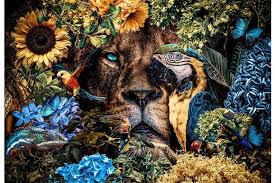Painting, one of humanity’s oldest and most profound forms of artistic expression, has evolved dramatically over thousands of years. From the ancient murals of Lascaux to contemporary abstract works, schilderij continues to captivate and inspire. This article explores the rich history of painting, its various techniques, and its impact on culture and society.
The Historical Canvas
The origins of painting can be traced back to prehistoric times. The earliest known examples are the cave paintings in Lascaux, France, estimated to be over 17,000 years old. These primitive artworks, created with natural pigments, depict scenes of hunting and animal life, reflecting the early humans’ relationship with their environment.
As civilizations developed, so did the art of painting. Ancient Egyptians used vibrant colors to decorate tombs and temples, while Greek and Roman painters excelled in fresco techniques. The Middle Ages saw a shift to religious themes, with illuminated manuscripts and frescoes adorning churches and cathedrals.
The Renaissance, spanning from the 14th to the 17th century, marked a golden age for painting. Artists like Leonardo da Vinci, Michelangelo, and Raphael revolutionized the art form with their mastery of perspective, anatomy, and composition. This period emphasized realism and the exploration of human emotion and experience.
The Baroque era followed, characterized by dramatic use of light and shadow, and led by masters such as Caravaggio and Rembrandt. The 18th and 19th centuries introduced Romanticism and Impressionism, with artists like Turner and Monet focusing on capturing light, color, and emotion.
Techniques and Styles
Painting techniques are as diverse as the artists who use them. Traditional methods include oil painting, which allows for rich, deep colors and detailed textures, and watercolor, known for its translucency and fluidity. Acrylics, a more recent development, offer versatility and quick drying times.
Different styles and movements have emerged over time. Realism aims to depict subjects as they are, while Abstract art focuses on shapes, colors, and forms rather than representational accuracy. Surrealism delves into the unconscious mind, creating dream-like imagery, while Pop Art draws inspiration from popular culture and consumerism.
Each technique and style has its own set of tools and methods. For example, oil painting often requires brushes and palette knives, while watercolor involves the use of various types of paper and brushes. Digital painting, a modern innovation, utilizes software and digital tools to create artworks on electronic devices.
Impact on Culture and Society
Painting has always been a reflection of cultural and societal values. It captures historical events, social issues, and personal experiences, offering insight into different times and places. For example, the works of Frida Kahlo explore themes of identity and pain, while the political murals of Diego Rivera comment on social justice.
Art movements often parallel broader cultural shifts. The Modernist movement, for instance, reflected a period of rapid change and experimentation in the early 20th century. Today, contemporary painters continue to push boundaries, addressing issues such as climate change, identity politics, and global conflicts.
Moreover, painting has a profound psychological impact. The act of painting can be a therapeutic process, allowing individuals to express emotions and thoughts that may be difficult to articulate otherwise. For viewers, engaging with paintings can evoke strong emotional responses and provoke thought, fostering a deeper understanding of the human experience.
Conclusion
Painting is a dynamic and ever-evolving art form that bridges the past with the present. It encompasses a vast array of techniques, styles, and meanings, making it a powerful medium for personal expression and cultural commentary. Whether through the intricate details of a Renaissance masterpiece or the bold colors of a contemporary abstract, painting continues to enrich our lives and shape our perceptions of the world. As we look to the future, it is clear that painting will remain a vital and inspiring force in the realm of art.


